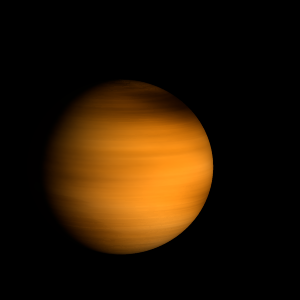|
|
Space Astro
|
Info for exoplanet "Monemede Best"
| Scientific (actual) data |
|---|
| Planet | Exomoon Kepler-1708 b-i |
| Planet status | Confirmed |
| Planet mass | 0.116 |
| Radius | 0.2329 |
| Orbital period | 4.6 |
| Semi major axis | 0.05 |
| Inclination | 9 |
| Discovered | 2021 |
| Updated | 2022-10-06 |
| Publication | Published in a refereed paper |
| Detection type | Primary Transit |
| Mass detection type | Theoretical |
| Radius detection type | Primary Transit |
| Star name | Kepler-1708 |
| Right ascension | 296.83° |
| Declination | 43.62° |
| Mag v | 16 |
| Star distance | 1667 |
| Star metallicity | 0 |
| Star mass | 1.088 |
| Star radius | 1.117 |
| Star age | 3.16 |
| Star temperature | 6157 |
| Wikipedia article | Exomoon Kepler-1708 b-i |
Back
| |
| Fictional info (?) |
|---|
| Suggested name | Monemede Best |
| Planet type | Small hot gas planet |
| In English, Monemede Best is often referred to as the "gray planet" because the water vapor prevalent on its surface gives it a scary gray appearance that is distinctive among the astronomical bodies visible to the naked eye.
The planet is named after the deity Monemede Best, the bringer of war.
The planet telescopically displays the complete range of phases, similar to Venus and the Moon, as it moves in its inner orbit relative to Kepler-1708, which reoccurs over the so-called synodic period approximately every 99 days.
The methane has probably photodissociated, and the free ammonium hydrosulfide (NH4SH) has been swept into interplanetary space by the solar wind because of the lack of a carbonyl sulfide layer.
It may also have a rocky core of heavier elements, but like the other small hot gas planets, Monemede Best lacks a well-defined atmosphere. |
| Atmosphere | Ammonium hydrosulfide (NH4SH) | 50% |
| Water vapor | 28% |
| Methane | 21% |
| Carbonyl sulfide | 0.00074% |
| Krypton | 7.0E-6% |
| Neon | 0% |
| Sulfur dioxide | 0% |
| Atmospheric pressure | 90 bar |
 |
| Moon | Roklis-ara | Medium-sized irregular crater-filled moon |
| Google search for Monemede best |
|
Website by Joachim Michaelis
|
|
|
|